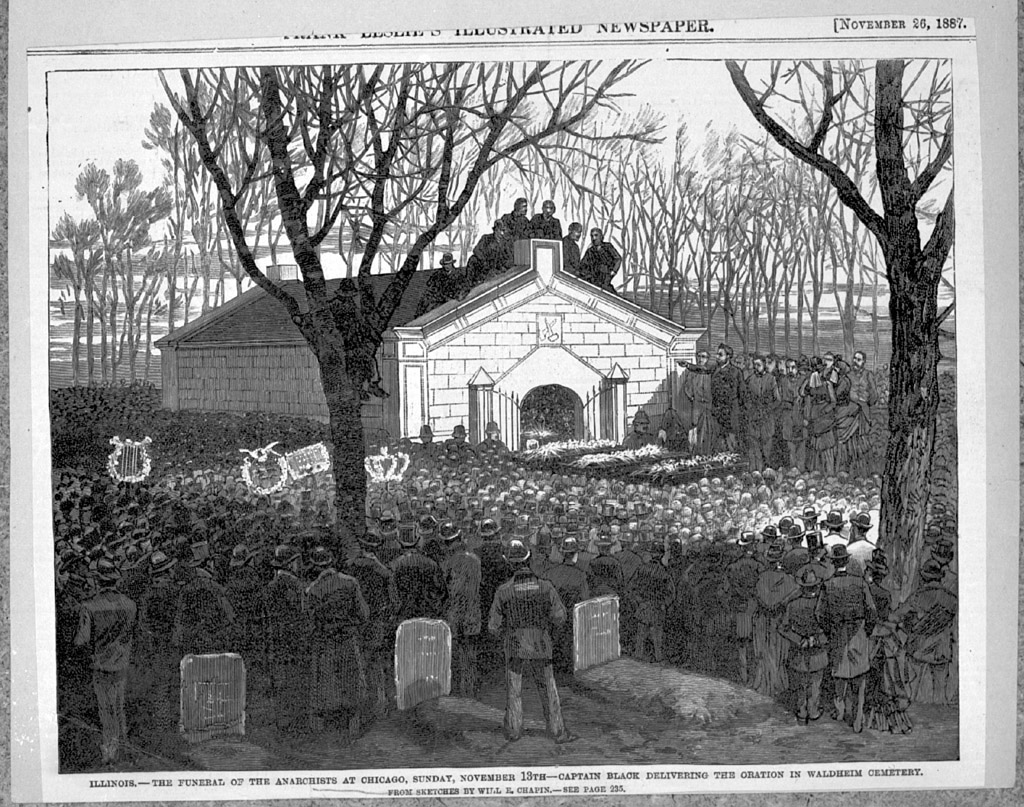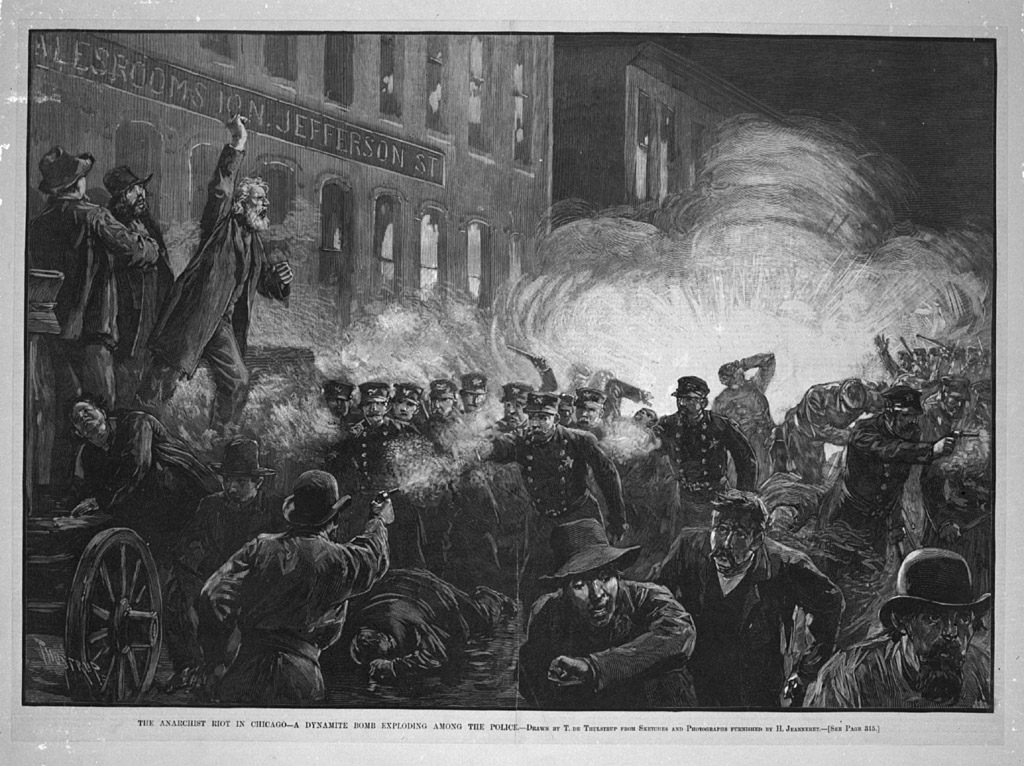Foner, Philip S., (ed).
Monad Press: London, 1969.
https://archive.org/details/foner_haymarket/page/n3/mode/2up
Historic Engravings of Scenes Related to the Haymarket Martyrs (1886-87)
This is a collection of digital copies of engraved illustrations of scenes related to the Haymarket bombing, trial, executions and legacy from 1886-87. Individual jpegs have title and author information embedded in the files, while file names carry the date and publication where the illustration was originally published.
These digital files originally appeared on the web site of the Chicago History Museum here: http://www.chicagohs.org/hadc/hadctoc.htm
Historic photographs related to Haymarket were also published online here: http://www.chicagohs.org/80/hadc/visuals/phototoc.htm
Both web pages may be found by entering these web addresses into the Internet Archive's Wayback Machine.





An Interview With Lucy Parsons on the Prospects for Anarchism in America
by Parsons, Lucy (1853-1942)
Originally published as "A Female Anarchist: Mrs. Lucy Parsons on the Prospect of Anarchy in America," an interview conducted in New York City and sent by telegram to the St. Louis Post-Dispatch for publication in that paper.
Published in St. Louis Post-Dispatch, vol. 37, no. 95 (Oct. 21, 1886), pg. 4.
Interviewer's name unspecified in original publication. Published in the USA prior to 1923, text public domain. Edited by Tim Davenport for republication by 1000 Flowers Publishing, October 2016. Non-commercial reproduction permitted.

Systemic Change
Anarchists reject focusing on petitioning for top-down reforms in favor of seeking solutions that attack social problems at their roots. Reforms can be a step towards fundamental change, but anarchists argue that we should begin from an analysis of the root causes of social ills and a holistic understanding of the systems that both ensure disparities and benefit from them.
So far, none of the reforms that politicians propose, such as civilian review boards or body cameras, have served to diminish police violence on a nationwide level. Neither have legal responses, such as bringing lawsuits or charges against officers, nor electoral solutions like lobbying or voting in new politicians. Despite reform efforts following the rebellion in Ferguson in 2014, the number of police killings annually in the US actually increased between 2015 and 2019.
Today, for the first time, mainstream discourse is acknowledging the possibility of defunding police departments or abolishing them altogether. Anarchists join Black feminists and prison abolitionists in insisting that cosmetic reforms will not solve the underlying issues of power, racism, and exploitation that drive state violence. Anarchists have been targets of police and state violence for over a century, from the Haymarket martyrs to the Anarchist Exclusion Act, the Palmer Raids, and the J20 case. These experiences inform the anarchist vision of a world entirely free of police and the exploitation they perpetuate.
“The unjust institutions which work so much misery and suffering to the masses have their root in governments, and owe their whole existence to the power derived from government, we cannot help but believe that were every law, every title deed, every court, and every police officer or soldier abolished tomorrow with one sweep, we would be better off than now.”
-Lucy Parsons, The Principles of Anarchism

Lucy Parsons

No comments:
Post a Comment